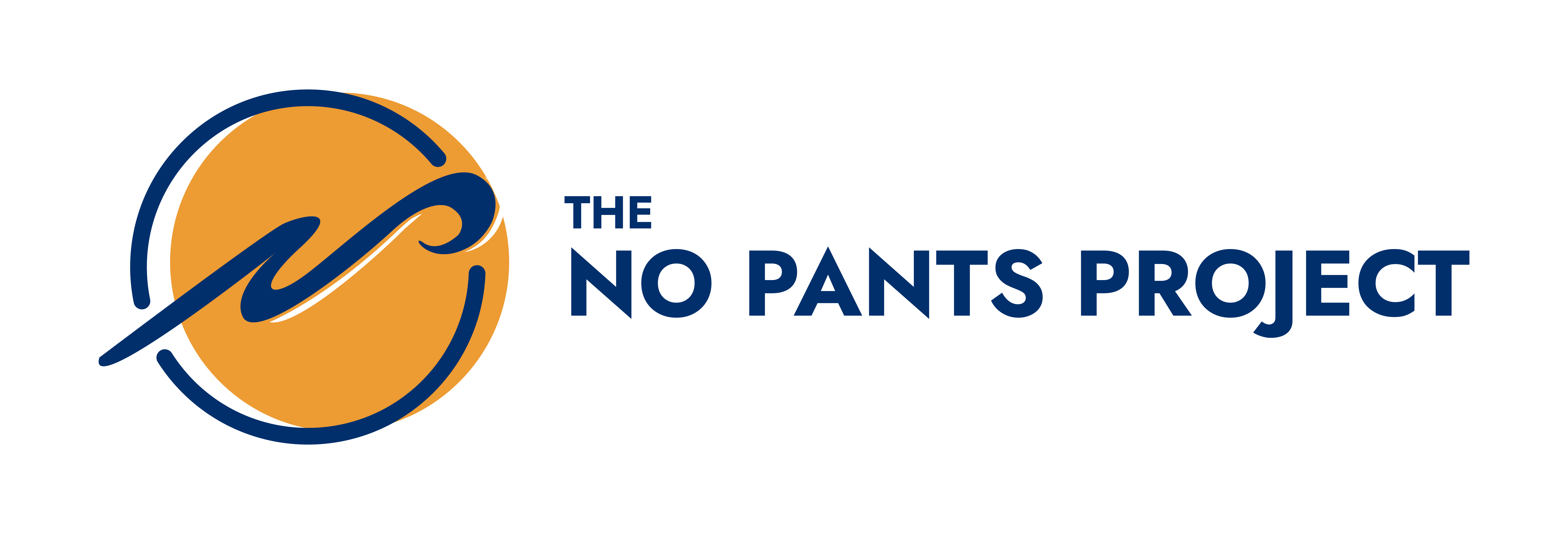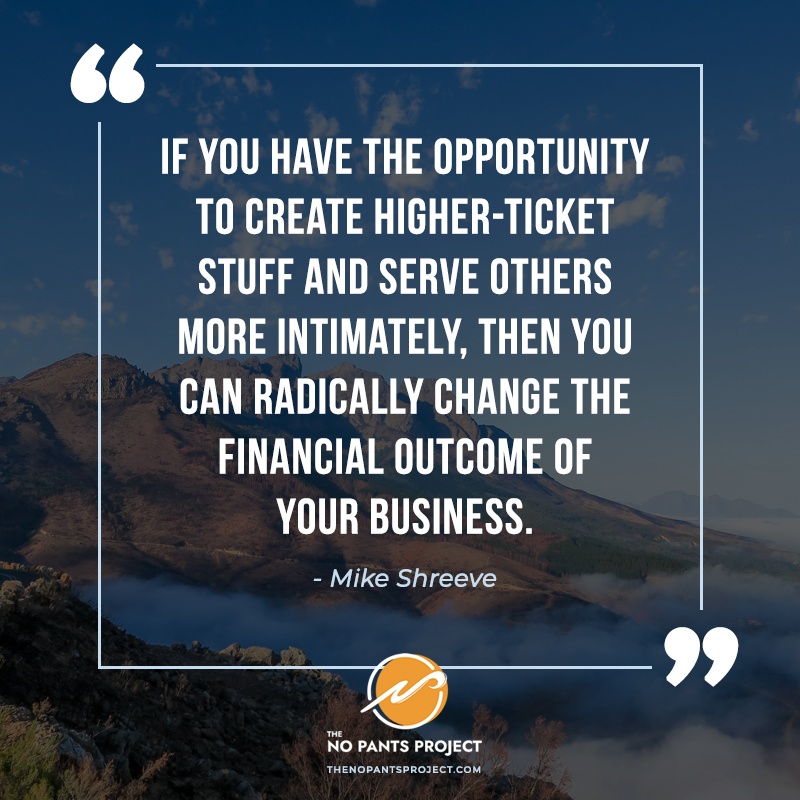SUMMARY
- In this video, we’re going to be talking about the two metrics we should be looking at in order to fix a business. Those two metrics are:
a. Cost Per Sale (CPS)
b. Average Order Value / Lifetime Value (AOV/LTV) - Let’s break this down as simply as possible. Let’s say you’re selling something for $50. When somebody buys it, your AOV and the LTV of that person is $50. That’s how much they’re worth to you forever because that’s all they’ve ever bought from you.
- And let’s say it costs you $50 to make that $50 sale. That’s not a very successful business, is it?
- So how do we fix this business without marketing? Because marketing will only try to lower the CPS. And while that is a worthwhile effort, it is a harder way to fix the business quickly.
- Instead, a better solution would be to add a $5,000 offer onto the back-end. Even if only 1 in 50 customers purchase it, that’s 2 percent of everybody who bought your $50 item.
- .02 x $5,000 = $100
- So if 2 percent of the people who buy the $50 thing also buy the $5,000 thing, your AOV/LTV is now $150 on average.
- This also increases your Return on Ad Spend (ROAS) from zero to 3x (for every $1 we spend, we get $3 back). And that’s without changing marketing.
- Now what if we have a $25,000 offer, and 1 in 100 people buy it?
- .01 x $25,000 = $250
- We now have an AOV/LTV of $400 and a ROAS of 8x (for every $1 we spend, we get $8 back).
- Now I know a lot of people will be afraid to offer $5,000 or $25,000 items and will try to sell something for $295 instead. OK, let’s assume that this $295 thing is so amazing and that 1 in 10 people buy it.
- .1 x $295 = $29.50
- All this does is bring your total AOV to $79.50 and ROAS to 1.59x.Now here’s the difference:
a. Sell $295 item: Every time we spend $1,000, we make $1,590.
b. Sell $5,000 and $25,000 items: Every time we spend $1,000, we make $8,000.
HOT NEWS & DEALS
- Free Training! How I Scaled To $100k/Month+
For anyone serious about scaling their service business, this training will cover the 4 Stages To 7-Figure Growth. Perfect for the coach, consultant, or freelancer stuck in a hamster wheel business who wants to grow and scale. - 15 Ways To Double Profits During Hard Economic Times Report
Need a few tips to help you through the hard times? Download this 40+ guide and I’ll show you what I do to help businesses thrive during even down turns. - Download ‘The Anti-Commodity Formula’ Workbook!
Learn how to attract your ideal clients and customers, charge more than your competition, and build a business from a home that you love.
INSPIRATIONAL QUOTES
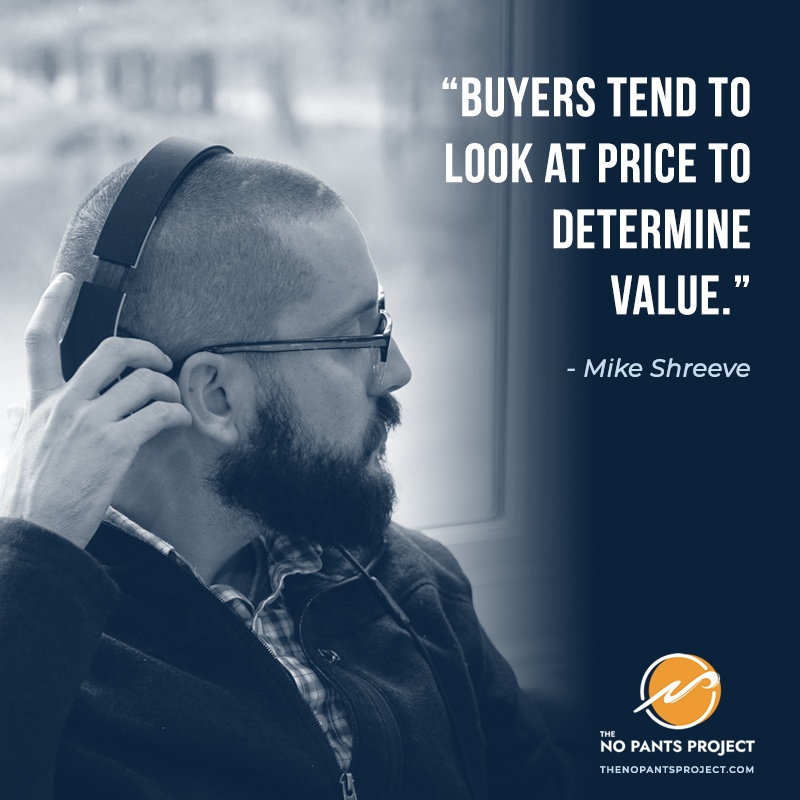
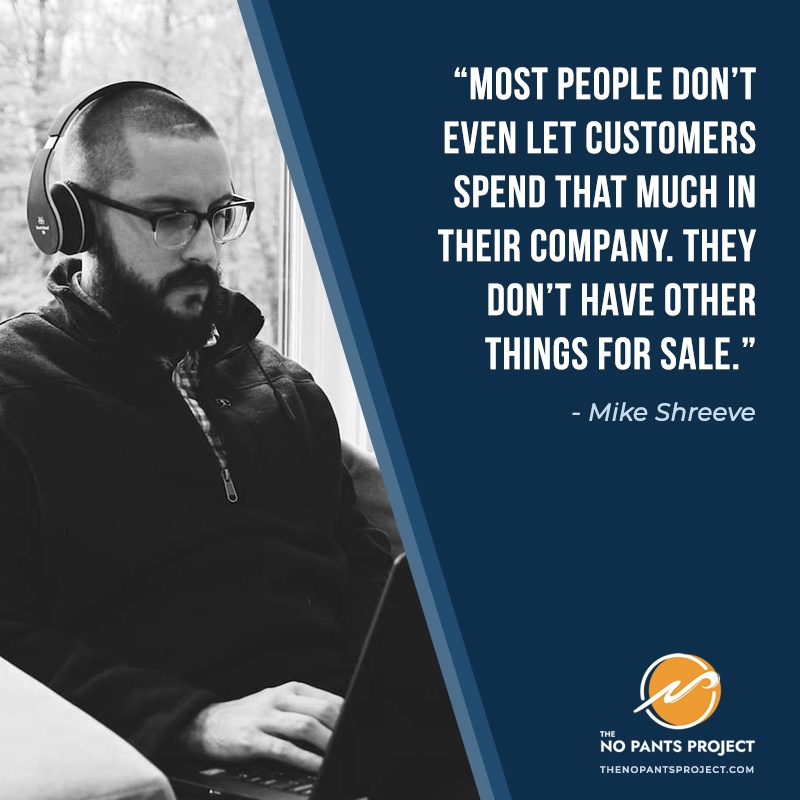
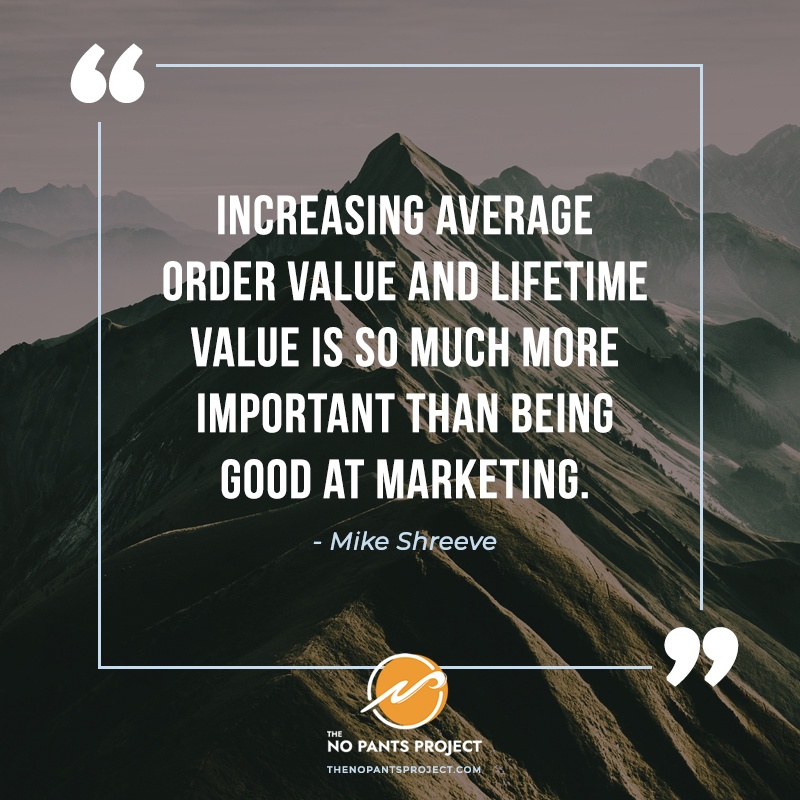
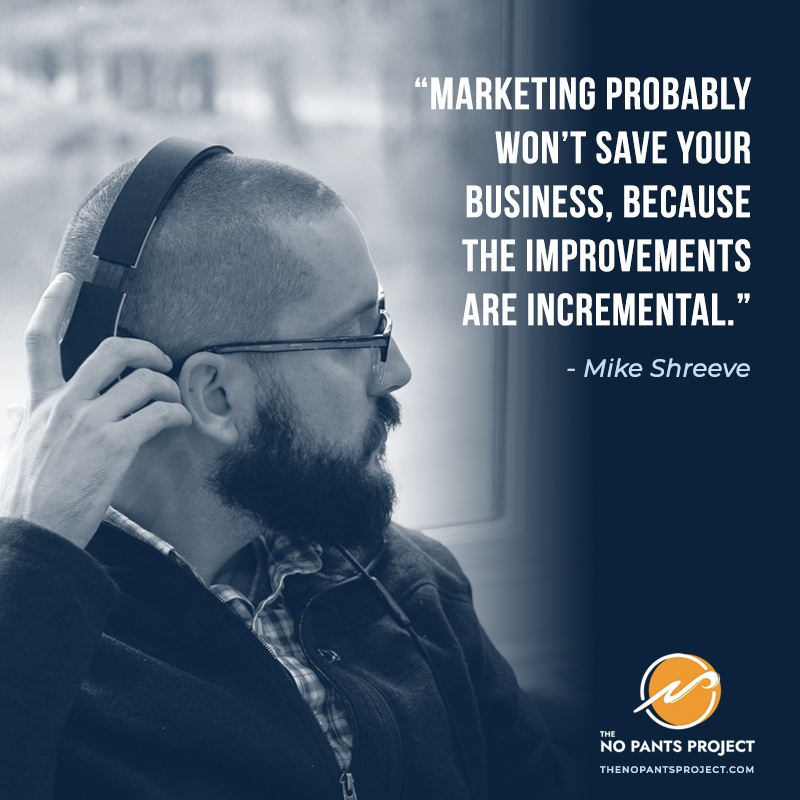
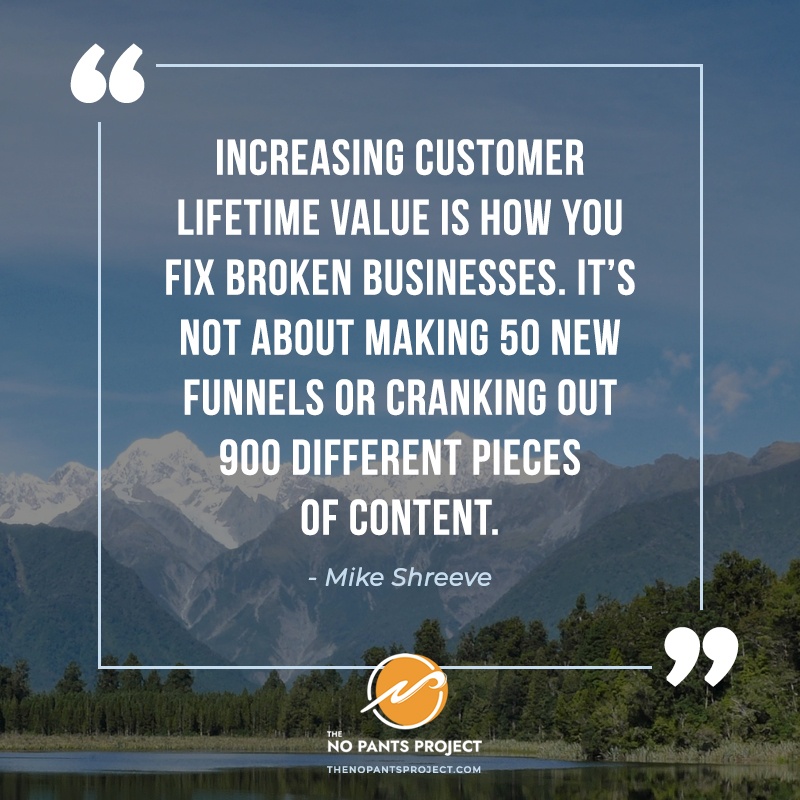
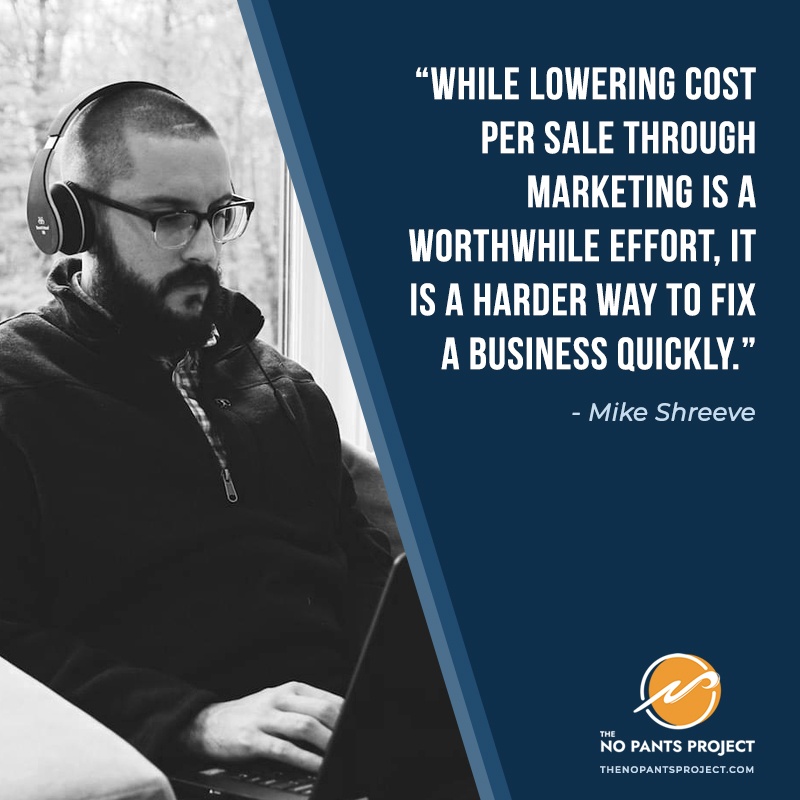
FULL TRANSCRIPT
Hello, my friends will be doing well in this video. We’re going to be talking about how to fix any business specifically when you’re talking about two metrics, those metrics are the cost to make a sale. And the average order value, lifetime value of your clients and customers.
When you look at your business in these two measurements, it doesn’t matter whether you’re using paid traffic or organic or whatever, because even if you’re using organic, there’s a cost to make a sale. If you want to be paid a hundred dollars an hour, you have to factor that in to how long it’s taking you to market something. So for example, if it takes you 10 hours to get a client using some kind of whatever it is that you’re doing, and you want to be worth a hundred dollars an hour, it means it actually costs you a thousand dollars to get that client.
So there is a cost to make a sale. And then that sale is worth a certain amount of money over time. Now, let me break this down for you as simply as possible, let’s say that you are selling something for $50. Okay. It doesn’t really matter what funnel you’re using. It doesn’t matter, whatever. Let’s just for sake of example, I want to show you the math. Let’s say that you’re selling something for $50, okay? Which means when somebody buys it, your average order value and the lifetime value of that person is $50 because that’s all there is in your business. They buy that thing and that’s how much they are worth to you forever, because that’s all they’ve ever bought from you. And let’s say for whatever, whatever it is you’re doing, it’s a funnel. It’s organic, it’s affiliate, whatever it costs you $50 to make that $50 sale, let’s say, well, that’s not a very happy, successful business. Is it because you need to fulfill on the $50, you need to have a customer support. You need to pay your, this, you need to pay or that, et cetera, et cetera. So how do we
This business without marketing, because what marketing will do is marketing will come in here and it will try to lower this cost per sale to become more efficient too. Let’s see if we can get it to cost us only $40 instead of $50. And while that is a worthwhile effort, and I’m not saying to ignore that it is a harder way to fix the business quickly. Let me show you if let’s say for example, we’re selling something for $50 and people are loving it and we’re selling a lot of it, but it’s not making us any money. One of the things that we could do is we could add a $5,000 offer onto the backend for those people who have paid $50 and want the next step, whatever that next step might be. Now you may say, okay, but how many people who pay $50 are actually going pay $5,000?
Well, let’s say for example, when somebody buys your $50 thing, you then invite them to a many chat or you invite them to book a call and you really intimate, and you have these good conversations and you really do a good job selling and et cetera, et cetera. And let’s say that one in 50. Let’s see, let’s say that. Well, like I want to make this really conservative that one in 50. So 50 people buy your $50 thing. And one of them says, you know what? I actually would like that $5,000 offer let’s pull out our calculator. One in 50 is the same thing. As saying 2% of everybody who bought your $50 item is going to buy your $5,000 offer. Well, what is 2% of 5,000? Let’s do our calculations here. It’s a hundred dollars now, what does that mean? It means that on average, if, if 2% of the people who buy the $50 thing also buy the $5,000 thing.
It means that on average, our average order value or the lifetime value, meaning when somebody comes in, how much money do they on average spend, we’ve just added a hundred dollars to this math. So now this is $150. We took the business from a return on ad spend of zero, because there’s a dollar in a dollar out. You get no return to a return on ad spend of three X. Every time we spend $1, we get $3 back. Okay? Now this is hopefully sinking in, in the significance. We didn’t change our marketing. It still costs us $50 to make a $50 sale. See, this is what happens. People they get so hung up because look, marketing is very sexy. There’s lots of bright, shiny objects, and you can do all sorts of cool things. And the gurus in the marketing space are very convincing that marketing will save your business.
It probably won’t because the best you could do in your marketing is to go from $50 to $40 cost per sale. It’s not like marketing is going to take you from $50 to $1, right? The improvements are incremental. When you look at the economics and increasing your average order value and the lifetime value, meaning people are able to buy higher more stuff from you that takes you from zero to three X return on ad spend. Now let’s think of something else. What if we have a $25,000 offer and one in 100 people buy it. Okay. So we offer a 5,000 and a $25,000. Well, here’s what happens if one in 100, so you, you sell a hundred of these $50 things and only one of those people say, yeah, I would like your $25,000 offer. Watch this. So 0.01 times 25,000 gives us $250. So what do we do with that $250?
Remember, that’s the average amount that someone will spend overall? Because one out of a hundred will that $250 gets added on top of this number right here. So we actually add it here and we say $250, and we’re going to just cause we’re recording a video. We don’t want to look silly. Now we have an average order value, average lifetime value of $400. So what that means is we make $400 and we spend $50 to make it. We’ve just given our business an eight X return on ad, spend eight X return on ad spend. That means every dollar that we spend, we get $8 back. Every dollar that we spend, we get $8 back. How much marketing did we change? None. We didn’t change any of it. Look, we’re happy that it’s selling. Oh my gosh, that’s the hardest thing to do. We have this offer, maybe we’re running, paid traffic to it.
It’s 50, whatever it is that’s selling. And this is what happens. Like if you run a webinar and you’re selling a thousand dollar course, and you’re just gutted that it’s costing you $1,200 to sell a thousand dollar course tack on some of this other stuff. Cause now you spend $1,200 and you have an average order value. If I felt whatever it is, whatever your numbers come out to be, this is how you fix it. So every dollar that goes out now in this scenario, $8 comes back. Are you going to get that $8 immediately? No, it’s going to take some time to take a $50 person to a 5,000 or a $25,000 offer. And I’ll make another video this week on what do you even put in a 5,020 $5,000 offer? Why would somebody go from 50 to 5,000 to $25,000? But this is how you fix broken businesses. It’s not about making 50 new funnels. It’s not about cranking out 900 different pieces of content. It’s not about a, I need to like tweak and become the best person on Facebook ads ever.
I will take bad Facebook ads and expensive cost to acquire customers. If that means I’m allowed to focus on this backend stuff. If I can focus on the economics, if I can focus on what else could we sell at a higher price point to increase the lifetime value, to increase on average what someone is able to spend in my company. Most people don’t even let their customers spend that much in their company. They don’t have other things for sale. Now I’m going to show you something that I know a lot of people are going to jump to. They think, Ooh, 5,000, I’m afraid 25,000. That seems like too much what I’ll do instead. And there’s running out of room here. So I apologize for this instead of what they do is they say I’ll just sell something for $295.
Okay,
Cool. Let’s run that math through. Okay. $295, let’s assume. Okay. Let’s assume that there’s $295 offers so amazing that one in 10 people buy it. So the people who were, who bought your $50 thing, let’s say one in 10 of them, buy it. Now let’s compare that to your one and 50. Um, that’s a pretty big jump in conversion rate, right? That’s a lot more people are buying this two, nine, five, five, five times more people are buying it. I can tell you from experience that is not like that’s very generous because the 5,020 $5,000 offer you’ll see in another video actually gives you a much better. Um, for the person who’s buying it, they get a much better result than two 95. And buyers tend to look at price to determine value. So if they see something for two 95, they just assume it’s not nearly as good as a $5,000.
That’s another video, but let’s just, just understand that a two nine, five selling five times better than a 5,000, that’s pretty generous, but let’s just assume that that’s what happens. So that means 10%, right? So we take that 10%. We multiply it by two 95 and that means we’ve added $29 and 50 cents to our average order value. Now, remember we were not, let’s just assume we’re not doing 5,000. We’re not doing 25,000 because this is what most people do. They they’re like I’m afraid of 5,000. I’m afraid of 25,000. So I’m just going to sell more two, nine, five. Well, all you’ve done is added 29 52, your average order value, which gives you an average order value of 79 50. Okay. So let’s figure out our return on ad spend here. So it’s 79 50. It still costs us $50. So our average return on ad spend in this scenario is 1.59 X.
Okay. Now here’s the difference? Here’s the difference in this scenario where all we have to sell is some $295 course. Every time we spend a thousand dollars, we make 1,590. Okay. Cause we didn’t do the 5,000. We didn’t do the 25,000 in the, in this case where we do the 5,020 $5,000. Every time we spend a thousand and we make eight grand, this is the difference. And this is why by understanding what you’re selling on the backend, how you’re increasing your LTV, how you’re increasing your AOV is so much more important than being really good at marketing. Because even if you’re really, really good at marketing and you make the mistake of, okay, I’m just going to tap, tap on a 295 on the back end. And that’s my whole business. What you will find is, uh, the math just doesn’t work for you. It’s going to be very difficult to scale, especially if you have, you know, costs like a Facebook ads manager and, and software and there’s refunds and their support staff.
And there’s all these different things. So this, my friends is how you fix any business. It doesn’t matter what you’re doing, e-commerce coaching, whatever it is that you’re doing, this map, math matters in everything that you do. Um, and so if you have the opportunity to get into higher ticket stuff, so if 5,000, $25,000, if you can create an offer that serves someone more intimately, which we’ll talk about in another video, then you can radically change the financial outcome of your business. Okay. And if you want us in my company to help you with any of this, yes, there’s a link in the description to book a call with my team. We’d love to talk to you about how we can help you with any of this. Uh, we have our own various high ticket offers as well. And, uh, you can book a call with them totally free, no obligation where no pressure. And, uh, yeah. Anyways, hopefully this has been helpful and we’ll see you in the next video.
